The children went to sleep believing they were safe. And then Israel targeted them as terroristsThe TelegraphJul. 31, 2006 |
Popular 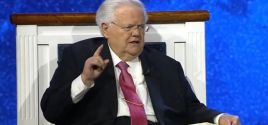
John Hagee Cheers Israel-Iran Battle as 'Gog and Magog War,' Will Lobby Congress Not to Deescalate

Right-Wing Media See Traffic Plummet in Wake of Algorithm Changes by Facebook, Google
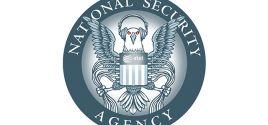
Patriot ACT on Steroids: FISA Bill Forces 'An Enormous Range' of Businesses to Act as NSA Spies
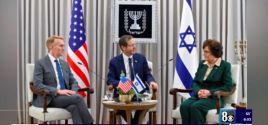
Congress Introduces ADL-Backed 'Countering Antisemitism Act' to Police Online Speech
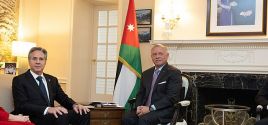
Israel to Extend Water Agreement With Jordan 'For Helping Shoot Down Iranian Drones'
 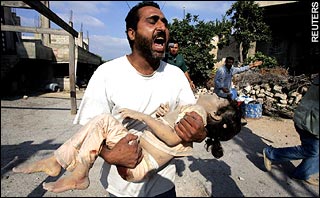 His smooth baby skin was mottled purple with bruising and his reddish hair frosted by cement dust, but nine-month-old Abbas Mahmoud Hashem wore a hauntingly peaceful expression when rescue workers reached him yesterday. His smooth baby skin was mottled purple with bruising and his reddish hair frosted by cement dust, but nine-month-old Abbas Mahmoud Hashem wore a hauntingly peaceful expression when rescue workers reached him yesterday.When they picked up his tiny body, still wearing green shorts over a nappy and a teddy bear vest, and looked at his eyes - their unblemished lids trimmed with fine, long lashes - it looked as if he might still be asleep. His dummy was still tied to its blue plastic chain and pinned to his singlet. But Abbas will never wake up. Instead he takes his place in local legend as the youngest victim of the bloodiest incident in Israel's onslaught on southern Lebanon. It cost the lives of as many as 57 civilians, almost all members of Abbas's extended family, who had refused to leave their home in the hamlet of Khuraybah, set on a hillside covered with olive trees, a mile north of Qana. Israeli politicians have claimed the only people left in southern Lebanon are terrorists. But the group of 65 people who huddled for safety in one of the larger buildings on Saturday night were mostly children and pensioners. They knew Israeli attacks had killed civilians as they fled the area. The road out of Qana is strewn with rocket-damaged cars and even the ghostly burnt outline of a motorbike, fused to the tarmac by a missile strike. Qana itself has been repeatedly bombed during Israel's 19-day campaign but the Hashems and their relatives by marriage, the Shalhoubs, thought they had found sanctuary on the ground floor of a solidly-built three-storey structure. Overlooking a valley and built into a hillside, it seemed to offer some protection. The women put down a carpet of foam mattresses. It was a warm night and the children stripped to their shorts and vests as they settled down. Far above them an Israeli warplane had settled on the building as a terrorist target. Twice it illuminated the house with a laser designator, and twice it bombed it with deadly precision. "The first bomb hit at about 1.15 am and only about six or eight people ran out of the house,'' said Khalil Bourji, a 54-year-old neighbour. "There was smoke everywhere but just as the smoke cleared a second bomb landed. The people who did this, the Israelis, are devils.'' Dawn revealed a scene of horror. The left half of the building had been replaced with a crater lined with shattered masonry and twisted reinforcement rods. The right half had skewed drunkenly to one side, some of its floors pancaked on top of each other and its walls buckled and broken. The nearby olive grove was white with a thick layer of dust. Bodies and body parts lay blasted among fragments of masonry. Almost nobody had survived from the large crowd known to be still inside when the second bomb struck. When ambulance crews arrived from Tyre, bravely covering roads on which they have been attacked in recent days, they began the grimmest search and rescue task, but without any real chance of rescue. They found limbs sticking from a muddle of broken concrete and mattresses soaked with blood attracting the busy attention of swarming flies. For a few hours the more wreckage they moved the more bodies they found. In one section they found 12 small corpses, all children, among them tiny Abbas. Their bodies showed few cuts or scratches. It was as if they had simply drowned in a wave of soil and cement dust that overwhelmed them in an instant. "The Israelis have planes, Hizbollah has no planes,'' shouted 31-year-old Kassam Abbas. "The Israelis can see everything. Surely they can see that this house had nothing but children playing in front of it?'' Traumatised survivors were able to draw up a list of 57 names of people they believed were in the building and were unaccounted for. In Tyre, at the general hospital which has already seen its fair share of hellish scenes, a member of staff was forced to do a grim name check as the bodies arrived by ambulance. One by one, he ticked off the names on the list from the bodies delivered by ambulance. By mid-afternoon 27 bodies had arrived. Abbas was number 25 but rescue workers believe the building will eventually give up the remains of all 57. After his name was ticked off, Abbas was bundled into a shroud of plastic sheeting, tied off at each end with sticky tape on which his name was scrawled. He was then placed alongside the other victims in the back of a refrigerated lorry normally used to carry meat for butchers that has been pressed into service as a mortuary. |



